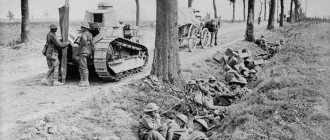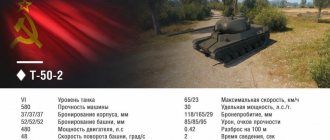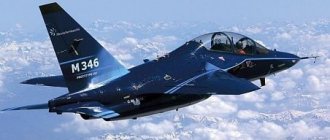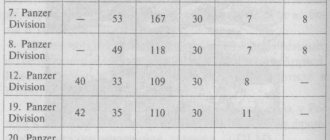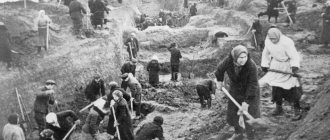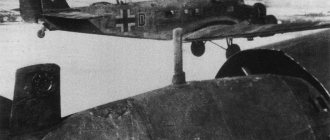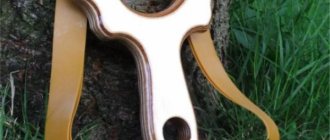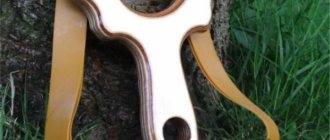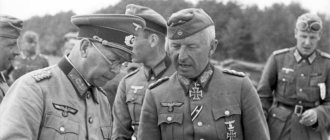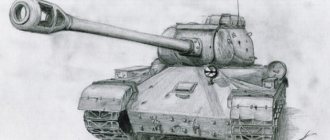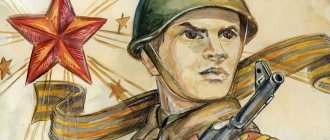The famous SS man, ace tanker, who crushed the lands of France, Poland, Greece, and the Soviet Union (Kursk Bulge) with caterpillar tracks, served in the Wehrmacht until 1936, and then - until his death - in the SS. In the USSR he became the commander of a platoon of assault guns. In the spring of 1944 he was transferred to Normandy, where he showed that the German Tiger tank was significantly superior to all vehicles used by our allies. His name is included in all military encyclopedias - this is Michael Wittmann.
Tank ace
He covered himself with special glory near the town of Villers-Bocage, where a demonstration battle was fought: in fifteen minutes, Michael Wittmann disabled 11 tanks, 13 armored personnel carriers and 2 anti-tank guns. Thus, he almost completely destroyed the British intelligence, not just any intelligence, but also very glorious since the time of the African campaign, the same one that was called “desert rats.” As a result of the actions of one Tiger, the breakthrough of the British army ceased to exist.
St. Aignan de Cramesnil is a town in Normandy, where in 1944 the brave SS soldier Michael Wittmann died. The tank in which the German ace was located was destroyed by a direct hit: the ammunition detonated and the turret was torn off. Everyone in the tank was simply smeared.
During the period of hostilities, Michael Wittmann, a master of tank battles, personally destroyed 132 anti-tank guns and 141 tanks. Most of this ace's personal account is recorded on the Eastern Front.
The legendary battle of Villers-Bocage
06/13/44, a week after the Allied landing, having moved from the city of Beauvais under constant air attacks, the 2nd company consisting of six “Tigers” was located in the area of the 213th height in the area of the Villers-Bocage commune. She received orders to stop the advance of the 22nd Tank Brigade of the British 7th Armored Division (the famous “Desert Rats”), which was moving through the town, bypassing the German defense line towards the road to Caen. Wittmann's company, hidden by vegetation, noticed an enemy column passing by at a distance of 200 meters.
At approximately 8 a.m., the commander attacked the British column on the main road, and the remaining 4 Tigers (one was out of action) operated from Hill 213. Whit and "Cromwell IV" and headed south to attack the rest of the column. Having knocked out eight half-tracks, four universal transporters and two anti-tank guns, he reached the intersection with the road to Tilly-sur-Seles. Here he destroyed 3 Stuarts from the reconnaissance unit and reached the outskirts of Villers-Bocage. In the city, "Tiger" Michael Wit and one half-track vehicle and turned onto Pasteur Street. Following it, he destroyed the Cromwell IV and Sherman and reached the main road. At the end of Pasteur Street "Tiger" Vit, and the commander decided to turn back, since he had gone too far and was in a built-up area without infantry support.
short biography
The most successful tank commander of World War II, Michael Wittmann, was born in April 1914 into the family of a farmer from the Upper Palatinate. At the age of twenty, he joined the Workers' Association (RAD - Reichsarbeitdienst), where he served for six months, after which he was called up for compulsory service in the German army.
In 1936, Michael Wittmann finished his service as a non-commissioned officer, and already at the beginning of 1937 he became an SS man under the number SS 311623. Here he began training to drive an armored vehicle, in which he showed excellent results.
Poland, Greece and other Europe
The Poles in 1939 had an army that, if inferior to the Wehrmacht, was only slightly inferior. Nevertheless, the German campaign in Poland met all the hallmarks of a blitzkrieg. In September of this year, Michael Wittmann, a newly minted SS Unterscharführer, as part of a reconnaissance unit in an Sd armored vehicle. Kfz. 232 rode through the territory of the neighboring state with constant triumph.
Already in October 1939, Wittmann climbed the career ladder. First he was transferred to the fifth reconnaissance armored company in Berlin, where there was a kind of “training” on assault guns, then to a newly created battery of self-propelled assault guns. Here he met and made friends with future aces, whom he would later catch up with and surpass: Hans Philipsen, Helmut Wendorf, Alfred Gunther and some others.
Path to the tank
The real tank career of Michael Wittmann began. At the end of 1940, in Greece and Yugoslavia, Michael Wittmann already commanded a platoon of StuG self-propelled guns. III Ausf. A, where he stayed until June 1941. Already on June 11, the LSSAH division, where he served, withdrew from its positions and went east, where Barbarossa’s plan awaited implementation. At first, Michael Wittmann fought in the southern regions of the USSR.
For the destruction of Soviet tanks on July 12, 1941, Vitman had already received the Iron Cross, II degree, was slightly wounded, but remained in service, and on September 8, he received the same award, I degree. The battles near Rostov brought him the Tank Assault Medallion (for 6 tanks destroyed in one battle at the same time) and the title of Oberscharführer. So he fought until June 1942, after which, for outstanding services, he entered the cadet officer courses in Bavaria. In September 1942 he graduated from there as a tank instructor.
Start of the war
In September 1939, SS-Unterscharführer Wittmann was the commander of the reconnaissance unit that took part in the invasion of Poland. This did not last long, because already in October he began training in the SS assault battery LSSAH on the Sturmgeschutz Ausf A armored assault artillery self-propelled mount. Wittmann's tank career began in the fall of 1940 in Yugoslavia and Greece. There he acquired his own team - a platoon of assault guns Sturmgeschutz III Ausf. A.
Tank of the Grenadier Division
After redeployment and reorganization in the spring of 1943, Michael Wittmann began his combat career already on the Tiger, which ironed the heights of the Kursk Bulge on the southern ledge of the front. On the very first day, Wittmann managed to disable 13 T-34 tanks and 2 anti-tank guns. At the same time, he helped Helmut Wendorf’s platoon survive, which got into big trouble. During the entire battle for Kursk and Kharkov, at the end of the operation until July 17, 1943, Vitman’s “iron tiger” destroyed 28 Soviet guns and 30 tanks.
In August, the division was transported for replenishment and rearmament to Italy, from where it was also used to control the occupied territories. In the newly formed SS heavy tank battalion, Michael Wittmann served with such legendary killers as tank aces Franz Staudeger, Helmut Wendorff, Jurgen Brandt. This unit was commanded by SS-Hauptsturmführer Heitz Kling on the Tiger number 1301.
Autumn offensive of the Red Army of 1943
The German invaders retreated from Soviet soil with bloody battles. The tank battalion where Michael Wittmann served was sent again to the Eastern Front - near Kyiv. Having replaced his “Tiger” with a younger beast, in just one day, October 13, Wittmann shot 20 T-34 tanks and 23 anti-tank guns. In January he received the Knight's Cross from his native Fatherland.
At the beginning of January, Soviet troops planned a breakthrough for a tank brigade, but Wittmann's Tiger stood in the way of the breakthrough. By January 13, as German radio happily reported, Vitman’s personal tally of destroyed equipment amounted to 88 tanks and self-propelled guns. Wittmann's gunner Balthasar Woll also received his knight's cross, since he knew how to hit a moving target even while moving. At the same time, Wittmann became an SS Obersturmführer. Adolf Hitler personally congratulated the tank ace, thanked him for his heroic actions and awarded him the “Oak Leaves” for the knightly badge. Below you can see: the crew is headed by Michael Wittmann. The photo shows his “Tiger”, on the gun barrel of which 88 rings were painted, denoting victories.
Burial place
After the remains of Wittmann and his crew were found, they were moved to the German war cemetery in La Cambe, where they attract many visitors. Unfortunately, there are people who believe that fascist symbols should be brought to the grave. Wittmann was a fanatical SS man and fought for a rotten regime. But because of this, one should not forget about his heroism. He was very popular among his comrades and sometimes, during the fighting on the Eastern Front, his humane side came out. For example, Michael Wittmann saved Russian tank crews who jumped out of a T-34 he had shot down from fire and handed them over to military doctors. But he was a cold-blooded soldier whom nothing could stop, which led to his death. The German cemetery at La Cambe can be found on the N13 between Bayeux and Carentan. Wittmann and his crew are buried in the 3rd row of lot 47, in the 120th grave.
In total, Michael Wittmann, a tanker, destroyed 141 armored fighting vehicles and 132 anti-tank guns by 08/08/44. Most of his victories were achieved on the Eastern Front.
Knights Division
At the end of February the unit had five holders of the Knight's Cross: Staudegger, Wendorf, Woll, Kling and Wittmann. But only the latter had a reason for special pride - oak leaves for this cross. And at the beginning of March, all these knights left the Eastern Front. Michael Wittmann, whose quotes were now collected, said that Soviet tanks were easy prey, Soviet anti-tank guns were more difficult to take.
On March 1, 1944, Wittmann married a girl named Hildegard Burmester; the tank knight Balthasar Woll, his gunner, was present at the wedding as a witness. By this time, Michael Wittmann, SS Hauptsturmführer, had become a national hero; his portrait could be seen in literally every home. The propaganda machine has done its job. By the way, gunner Voll survived the war and fought until his last day. Died in 1996.
Text of the book "Operation Totalize". Michael Wittmann's last fight"
Chapter 9. Conclusion
Historians have ambivalent views of Operation Totalize, calling it, if not a defeat, then a very minor and costly victory for the Allies. In this case, as a rule, it is not the real goals of the operation that are taken into account, but loud statements made immediately before the start of the offensive and predicting that this would be the last breakthrough that would put an end to the entire Normandy campaign. It is unlikely that such promises should be taken seriously, especially since this was not the only case when, in order to raise the morale of soldiers, they were assured that victory in a single battle would end the war. Operation Totalize is a clear confirmation of the ancient military wisdom that no most ideal plan survives contact with the enemy. Gross mistakes were made by both warring parties, and a truly innovative plan encountered a number of material and moral obstacles during its implementation, not to mention the notorious “fog of war.”
The commander of the Canadian 2nd Infantry Division, Major General Charles Foulkes, with his adjutant in his headquarters armored car on the street of liberated Falaise. In November 1944, Foulkes was appointed commander of the Canadian 1st Corps in Italy.
However, if we take into account only the facts, it is obvious that the German defense in the flat area south of Caen was broken through with dire consequences for the defending side. The Allied territorial gains, especially in light of the modest results of previous offensives in this sector of Normandy, were more than impressive. Moreover, Totalize became an example of the most sophisticated operational art demonstrated by the Anglo-Canadian forces during the entire Normandy campaign. At the same time, the practical implementation of innovations that changed the offensive doctrine of the Allies to break into the enemy’s defenses fully revealed the unfortunate weaknesses of the top and middle levels of the command of the Canadian army. The lack of real experience in command and control resulted in the fact that much more attention was paid to the bureaucratic procedures of staff planning than to the practical preparation and training of personnel. The Canadians' adherence to British methods of warfare, based on mandatory predominance in firepower and overwhelming numerical superiority in the direction of the main attack, also played a negative role. The Germans outplayed their opponents thanks to experience, flexibility and the ability to quickly respond to changing situations, and this allowed them to turn the most stalemate situations to their advantage.
A compelling argument was that the German army had superior weapons, which negated the numerical superiority of the Allies.
At the same time, at the tactical level, it is almost impossible to find fault with the actions of Canadian and British soldiers during Operations Totalize and Tractable. Perhaps at times they did not act as quickly as the higher headquarters wanted, but a number of specific combat examples show that the Allied soldiers fully possessed the very important factors for achieving success on the battlefield - high morale, courage and the will to win . Modern critics of the operation, who have the opportunity to judge events from the height of the past years and have comprehensive information about the state of affairs on both sides of the front, often reproach Lieutenant General Symonds for not risking breaking his plan and not abandoning the raid of phase 2 of the operation “ Totalize", missing a real opportunity to break into Falaise at a time when the road to the city was open. Statements of this kind show how superficially the supporters of such versions understand the realities of that time.
Soldiers of the South Saskatchewan Regiment are mastering the captured German amphibious all-terrain vehicle "Schwimmwagen". The photograph was taken in the village of Roccancourt on August 11, 1944.
British troops enter the liberated French village of Gace on August 23, 1944.
What Symonds can really be reproached for is his desire to explain the unsuccessful turns of the operation not by his own shortcomings, but by the slowness and indecisiveness of his subordinates. However, for all its shortcomings - real and imagined - Lieutenant General Guy Symonds was, without a doubt, the best Canadian senior commander of the Second World War, and Operation Totalize was an undeniable success for the Allies (although it could have, under a different set of circumstances, achieved more ) and that’s exactly how it was perceived in 1944.
And finally, a little bit of alternative history that is fashionable these days. On August 4, General Montgomery asked whether it was possible to move the date of Operation Totalize forward a day. Having no serious reasons to justify the refusal, Lieutenant General Symonds agreed, and then events developed as usual. However, if the commander of the 2nd Canadian Corps had shown character then and refused to postpone the hour, these 24 hours could have radically changed the course of Totalize. On the night of 7–8 August, a significant part of the 12th SS Panzer Division would depart westward to take part in the attack on Mortain. The 85th Infantry Division was still in the process of being transferred to new positions and the only defenders of the front line along the Caen-Falaise national highway were the soldiers of the 89th Infantry Division. It is also quite possible that the extra 24 hours would have allowed Allied intelligence to determine the true location of the SS Panzer divisions and confirm that Phase 2 targets were less defended than originally thought.
In this case, after breaking through the front and destroying the 89th Infantry Division, the real possibility of a massive attack on Falaise would have opened up, and the Germans would not have had any serious forces to prevent this. Thus, a delay of one day could lead to the capture of Falaise as early as August 9 or 10, and the encirclement ring around the German group in Normandy would close ten days earlier than the actual date. Such a turn could have led to the complete collapse of the German Western Front already in the fall of 1944, and the persecution that began later would have ended not on the German border, but at the walls of Berlin. But history does not tolerate the subjunctive mood. And on August 15, the day Operation Tractable actually ended, there were still a long eight and a half months left until the end of the war.
A Canadian truck with a 40mm Bofors anti-aircraft gun on the destroyed Falaise street. The city suffered greatly during the liquidation of the German cauldron.”
Part 2 The last battle of the “Black Baron”
Most domestic history buffs associate Operation Totalize with only one event - the death in battle of the famous German tank ace Michael Wittmann. Disputes over how and under what circumstances the man who, by analogy with the great air ace of the First World War Manfred von Richthofen, received the nickname “Black Baron” met his death, have not subsided to this day. In this regard, we considered it necessary to analyze all available information directly or indirectly related to the battle near the village of Gomesnil, and, to the best of our ability, answer the question: “Who really killed Michael Wittmann?”
Michael Wittmann at the headquarters of the 1st SS Panzer Corps on the day of his triumph at Villers-Bocage on June 13, 1944.
Wolfgang Rabe.
Raised to the shield by German propaganda, the 30-year-old holder of the Knight's Cross with Oak Leaves and Swords set off for his last battle from the village of Shinto on the afternoon of August 8, 1944, and for a long time the circumstances of his death (as well as the fate of his remains) remained an unanswered question. Although the lack of factual evidence of his death left a small hope that “lucky Michel” managed to cheat death this time too, the participants in the battle were not so optimistic. A witness to the fatal battle, medical officer of the 101st SS Tank Brigade, Hauptsturmführer Dr. Wolfgang Rabe, wrote:
“Wittmann was advancing with 4 or 5 Tigers east of the road leading to Caen... I was away from them. The tanks were hit, apparently directly, by British 150mm guns. Several Tigers caught fire. I tried to find out if any of the crew had survived. Although I didn't see anyone, I assumed that someone might have gotten out through the bottom hatch of the tank. I tried to get closer, but it turned out to be impossible - as soon as I leaned out of the roadside ditch, they opened fire on me. I waited two or three hours, hoping that one of the crew members would make themselves known. Towards evening I went to SS-Brigadeführer Kremer [Chief of Staff of the 1st SS Panzer Corps] and told him what had happened. He ordered me and the remnants of the unit to go under the command of Wünsche.”
When SS-Obersturmbannführer Max Wünsche learned that the famous ace was missing, he ordered a most thorough search for Wittmann and his crew. One of the direct executors of this order, SS private Horst Borgsmuller, recalled:
“Together with the driver, Private Klein, we drove in the direction of Omenil. It was already dark and I couldn't see anything clearly. After some time, we came under machine-gun fire, to the right of the road. Searches on the ground and inspection of advanced first aid stations did not bring any results. I learned from the grenadiers that the Tigers on the right of the highway had been hit by enemy anti-tank guns. SS-Obersturmführer Wendorf of the heavy tank battalion could not tell me anything more specific.”
Contemporary aerial photograph showing the sites where Tiger No. 007 was shot down and the burial site of its crew.
Despite the unsuccessful search, many soldiers and officers of the 1st SS Panzer Corps could not come to terms with the idea that their famous ace had died. The foreman of the 2nd company of the 101st SS Tank Brigade, Hauptscharführer Georg Konradt, like many other soldiers of the battalion, hoped that Michael Wittmann was alive, but was captured. “It is difficult to express in words how the company’s soldiers were struck by the loss of our dear Hauptsturmführer. At the same time, almost everyone in the company hoped that he was still alive and had been captured by the British wounded. The Oberscharführer, who had just returned from the hospital, said that he had heard the radio station “Soldier of Kale” report this.
[English propaganda radio]."
Although the combat report of the 12th SS Panzer Division dated August 8, 1944 directly stated: “...during the attack of the Tigers assigned to the 12th SS Panzer Regiment, the battalion commander, Hauptsturmführer Wittmann, was killed in action...”,
officially Wittmann was considered missing. Wittmann's wife Hilda Burmister continued to believe that her husband was alive, and even the visit of the commander of the 101st SS Tank Brigade, SS-Obersturmbannführer Heinz von Westernhagen, did not convince her. The letter, written by Dr. Wolfgang Rabe eight weeks after Wittmann's death, was not least dictated by the desire to help the unfortunate widow realize the cruel truth:
“Now, dear Frau Wittmann, I can describe the events of August 8, 1944. Since August 7, we were at the bridgehead in Grembosk, where the 2nd company of Obersturmführer Wendorff was deployed. The 3rd company, withdrawn to reserve, received orders to attack at 6 am on August 8th. At 11.30 she was supposed to move north to Shinto along the Caen-Falaise road. At approximately 7:00 am, Michel and I arrived at the headquarters of the 3rd company, and at approximately 11:00 am we arrived in Shinto. At 11.30, when Michel got into his tank, I saw him for the last time. The attack was delayed slightly because the British carried out carpet bombing. However, we did not suffer any losses. At this time I was in a ravine, approximately 500 meters behind the tanks. When the attack began, I walked several hundred meters to be even closer to the front line. The enemy conducted dense artillery fire. I decided to make my way to Michel's tank. When about 250–300 meters remained before him, a sheaf of flame burst out of the tank, and the tower collapsed to the ground. The tank was completely burned out. I did not give up trying to get to him, but crossing the open area was not possible, because the Tommy guns were firing at even single infantrymen with anti-tank weapons. It is unlikely that Michel managed to leave the tank before the explosion. In this case I would have seen him. None of his crew survived. We have to admit that Michel was killed in battle. I am telling you this, dear Frau Wittmann, because I consider it dishonest to give you false hope. It’s hard to believe that our Michel is no more, but we don’t even dare to hope that it could be any other way. I must tell you that Michel has always been and will remain an example for us, and his name is known throughout Germany! My warmest wishes, your Dr. Rabe."
By this time, the foundation of the future legend about the heroic death of the famous tank ace had already practically formed. If at Villers-Bocage Wittmann (according to propaganda) single-handedly disrupted the British flanking of the entire SS Panzer Corps, then at Cinto his near-self-sacrifice attack prevented the breakthrough of the 4th Canadian Armored Division into Falaise. But this legend will truly capture the minds of millions of people around the world only after about 30 years.
In early March 1945, a young Frenchman, Serge Varin, was riding his bicycle along Highway 158 and, intending to relieve himself, turned off the road behind a hedge. Four damaged “Tigers” appeared before his eyes, the thickets of bushes prevented him from seeing them from the road. The curious boy examined with interest the nearest tank, the turret of which lay a few meters behind him. Having a Kodak camera with him, Varin captured this tank on film, and also took a photo of a Typhoon fighter-bomber missile lying nearby. Finally, he photographed another “Tiger”, on which two local residents posed. Until the 1970s, these photographs were not known to the general public.
The badge of SS Unterscharführer Heinrich Reimers (driver of tank No. 007) and a 6.35 mm Wittmann pistol, discovered at the end of March 1983 by a search team led by Otto Horst in an unmarked grave near the Caen-Falaise highway near the village of Gomesnil.
In 1947, SS Rottenführer Herbert Debusmann, a historian of the combat path of the Tiger heavy tank units, was sent along with other prisoners of war to the Shinto region to collect unexploded ordnance. In a brief report, he said that five destroyed Tigers of the 101st SS Tank Battalion were still on the battlefield. The turret of one of the tanks, which, judging by the number 007, was the battalion commander’s vehicle, was torn off and lies a few meters from the hull. The Rottenführer did not find any traces of field burials near the tanks, which, however, is not surprising, since in the first months after the liberation of France, employees of the Army War Graves Registration Service (ASRVZ) carried out large-scale work to transfer all identified field graves to temporary military cemeteries. In the second half of the 1950s, a special German Commission for War Graves was engaged in an inventory of such cemeteries on the battlefields of Western Europe. She was faced with the fact that a large number of graves contained unidentified bodies and the only information that Allied documents had about them was the location from which the remains were transferred to the cemetery. It was believed that the bodies of Wittmann and his crew rested in one of these graves. However, after a thorough analysis of the ASRVZ reports handed over to the German side, no mention was found of remains transferred from a field along Highway 158 in the Gomesnil area. It turned out that if Wittmann’s body was buried at all, his grave was most likely simply plowed under by a local farmer, and the chance of discovering it was zero.
The search for Wittmann's grave was further continued in the mid-1970s, when the above-mentioned Serge Varin met with veterans of the 12th SS TD and gave them a photograph of the destroyed "Tiger" No. 007. After publication in the official bulletin of the association of veterans of the 12th SS TD, the photograph was identified by former tank crews of the 101st SS Tank Brigade - they unequivocally recognized that this was the tank in which Michael Wittmann went into his last battle. Eric Lefebvre, who was preparing a large book, “Tanks in Normandy,” became aware of the photo of “Tiger” No. 007. The book was planned as a study of the use of German tanks in Normandy with a large number of photographs in which the battle sites were depicted in a “then and now” format.
Lefebvre's consultant, French historian Jean-Paul Pallu, joined the search and in 1982 visited the village of Gomesnil. In the field, east of the road, he found small fragments of Tigers, which proved that this was the same place where tanks of the 101st SS Tank Battalion, including Tiger No. 007, were knocked out 38 years ago. In addition, Pallu managed to talk to local residents and found out that initially the remains of German soldiers were covered with earth next to the destroyed tanks, but some time later they were reburied in two common graves near Highway 158. The son of a local resident, who was once responsible for preparing the funeral, said, that one of the bodies - severely mutilated - was wearing not soldier's boots, but shoes, from which it could be concluded that it was an officer. Pallu found out the exact location of the burial of the officer’s remains, and in September 1982, the editor of the After the Battle publishing house transferred these findings to the War Graves Commission. They decided that it made sense to conduct additional searches. At the end of March 1983, a search team led by Otto Horst managed to discover the said burial place. Fragments of black material, boots, belts, fittings and a pistol found in the grave indicated that a tank crew was buried here along with their commander. The bones were so mixed up that it was impossible to separate them. The surviving “dog tag” and the prosthetic front teeth were sent for examination. A comparison of the prosthesis with Wittmann's dentist card showed a complete match, and the badge, as it turned out, belonged to Heinrich Reimers, the driver of Tiger No. 007. Thus, the mystery was finally revealed.
Michael Wittmann
Franz Heurich
Hans Hoeflinger
Helmut Dollinger
Peter Kisters
Willie Irion
Rolf von Westernhagen
The remains of the tank ace and his crew were transferred to the German military cemetery in La Cambe and on June 3, 1983 they were reburied in mass grave No. 120 (row 3 plot 47). The ceremony was attended by relatives of the tankers, including Wittmann’s widow. Reimers' dog tag and Wittmann's 6.35mm pistol are currently on display at the War Graves Commission headquarters in Kassel. Since then, Jean-Paul Pallu has gained the reputation of the man who found Wittmann’s grave, but the impetus for his search was photographs taken by the curious Frenchman Serge Varin.
If all the i’s are dotted with the final resting place of the famous tank ace, then with the definition of the real “killer” of Wittmann everything is not so simple. First of all, it is important to remember that during the war and for a long time after its end, Wittmann's name and achievements were practically unknown outside Germany. The Canadian and British soldiers fighting south of Caen had no idea that they were dealing with one of the most successful tank aces in history. They fought Tigers and Panthers and considered them a deadly enemy, regardless of who was sitting in the commander's cupola of the tank. For the first time in official documents of the Allies, Wittmann was mentioned only in August 1945, in the transcript of the interrogation of Kurt Meyer. Meyer told the investigator that on August 8, 1944, near Shinto, a German tank officer, who had a record number of destroyed enemy tanks on his personal account, died in battle. This information, without any special additions, was then broadcast by various authors for almost 20 years.
Only after a surge of interest in the German elite units (caused by the publication of a number of books, which were, in fact, an attempt to whitewash the SS troops and show them as simple soldiers, and not fierce bearers of the National Socialist idea), Wittmann’s name became known to the general public. Very soon, launched by German propaganda to maintain the morale of its soldiers, the legend of a miracle tank driver single-handedly destroying dozens of enemy tanks found a second life. The last battle of the famous ace became an independent part of this legend, and several different versions of his death gradually emerged. According to one of them, Wittman was the victim of an air strike - an enemy attack aircraft fired a rocket that hit the rear of the tank and caused an internal explosion. This version was brought to life by Serge Varin’s statement that he did not find any other holes on the tank with No. 007, except for a hole in the upper rear hull plate. According to another version, Wittmann, leading a small group of tanks from his battalion into battle, broke into the ranks of an armored brigade (or even a division) of the Allies and died in an unequal battle, having previously personally destroyed from five to ten enemy tanks. Five Allied units are nominated to oppose Wittmann in this battle: the Polish 1st Armored Division, the Canadian 4th Armored Division, the British 144th Royal Armored Regiment, the Canadian 27th Armored Regiment (Sherbrooke Fusiliers) and the 1st Northamptonshire Regiment. Yeomen. (Recall that the last three units are equivalent to tank battalions of the armies of other countries.) In order to assess the validity of the claims of each of the candidates for the title of “Wittmann’s killer,” we will try to reconstruct the course of events in the first half of the day on August 8, 1944, based on documents and memories of direct participants in the events .
Battle diagram drawn up by Hoflinger.
On the morning of that day, the headquarters and 3rd company of the 101st SS Tank Brigade were located in Bretteville-le-Rabes, while the 2nd company was still operating as part of SS-Obersturmbannführer Max Wünsche's Kampfgruppe fighting at the Grembosk bridgehead. The day started with an unpleasant incident. At approximately 6.00, the commander of the 3rd company, SS Hauptsturmführer Franz Heurich, without coordination with the battalion commander, advanced with the Tigers of his company and the tanks of the 5th and 7th companies of the 12th SS Panzer along highway No. 158 towards Caen. A battalion officer was sent in pursuit for special assignments, SS Hauptscharführer Hans Hoflinger. Having caught up with the company, he conveyed the battalion commander’s order to stop arbitrariness and await further orders. However, before Hoflinger caught up with the group, the Tigers of the 3rd Company had already entered Shinto. At 9.00 Heurich reported to headquarters: “We have arrived in Shinto, the enemy is not in the village.”
Helmut Dollinger's destroyed Tiger No. 008. The battalion emblem is visible on the front armor plate. The jack mounting bracket at the rear of the hull indicates that this is a command version of the tank.
Hans Hoeflinger described the events of the morning of August 8th: “On that terrible day I was awakened unusually early. The reason was that Heurich's company left its location and, without orders, went down the highway towards Caen. Michel wanted to know what happened, and therefore I, as an officer for special assignments, had to catch up with the company as soon as possible and find out the purpose of their movement. I carried out the order and reported to Michel. After several minutes of angry outbursts, which, as far as I knew, were characteristic of him, he calmed down, and then ordered me to send both tanks of the battalion headquarters to Heurich's position. I carried out the order and hurried back to Michel. Later we headed - he in the Kübelwagen, and I in my Schwimmwagen - to Meyer's command post to take part in an operational meeting. When it ended, we began to discuss whether we should join the attack. The battalion's liaison officer, SS Untersturmführer Dollinger, was with us. Suddenly Michel said: “I have to go, because Heurich is unlikely to cope.” This was Heurich’s first combat operation, and the possibility of some unpleasant surprises could not be ruled out... A few hours later we returned to our tanks, which were actually located on the road beyond Shinto. At first it was assumed that I would not participate in the attack, but unexpectedly Michel outplayed everything. I was enthusiastic about this, although I noted that Michel was not completely sure of the correctness of this decision. We then climbed into our tanks and drove them into cover to avoid detection from the air."
Wittmann and battalion doctor SS-Hauptsturmführer Wolfgang Rabe arrived in Shinto at approximately 11:00. On the south-eastern outskirts of the village, behind the hedges, there were seven combat-ready "Tigers" of the battalion - tanks with side numbers No. 304 (commander - SS-Hauptsturmführer Franz Heurich), No. 313 (commander - SS-Oberscharführer Peter Kisters), No. 314 (commander - SS-Untersturmführer Willi Irion), No. 333 (commander - SS-Oberscharführer Rolf von Westernhagen), No. 213 (commander - SS-Hauptscharführer Hans Hoflinger), No. 008 (commander - SS-Untersturmführer Helmut Dollinger) and No. 007 - the vehicle of the battalion commander, whose duties are this moment was carried out by Michael Wit Wittmann that day consisted of gunner SS Unterscharführer Karl Wagner, radio operator SS navigator Rudi Hirschel, driver-mechanic SS Unterscharführer Heinrich Reimers and loader (and also second radio operator) SS navigator Günter Weber. Soon, the commander of the 12th SS TD, SS Oberführer Kurt Meyer, and the commander of one of the Kampfgruppen divisions, SS Sturmbannführer Hans Waldmüller, arrived in Shinto to personally lead the upcoming counterattack. In his memoirs, Meyer wrote:
“I met with Waldmuller north of Bretteville-le-Rabe, and we rode together to Sinto to get our bearings. Wittmann's "Tigers" were already stationed east of Shinto, hidden behind a forest belt. Until now, they have not yet been introduced into battle. Shinto was under artillery fire……Enemy tank divisions stood ready to advance along all roads. Waldmuller and I knew that we could not allow the enemy tanks to carry out another attack... ...We must try to seize the initiative. I decided to defend Shinto with the forces already deployed and attack at lightning speed with all available units east of the road. In this way I hoped to thwart the enemy's plans. I chose the forest southeast of Garcelles as my target. We had to take a risk and attack in order to gain time to organize a defense at the Lezon River line. According to the plan, the attack was to begin at 12.30.”
Johan Schott
However, having noticed a single Allied aircraft in the skies above the battlefield, which was clearly engaged in marking targets, Meyer ordered his subordinates to immediately attack in order to get out of the possible kill zone. As a result, the counterattack began at 12.20. Having advanced from the outskirts of Shinto, the Tigers began to deploy into battle formation. In the group of tanks moving from the eastern side of National Highway No. 158, Wittmann's Tiger was closest to the road, with the vehicles of Kisters, Heurich, Dollinger and Irion moving to the right of it. On the western side of the highway, slightly behind the main group, Hoflinger's Tiger was advancing, and to his left was Westernhagen's car. The Tigers had to cover two and a half kilometers of virtually open space, which locals call Pre Marie Field. On the left side the field rose slightly towards the road, on the right it was limited by a forest belt that ran along the edge of the Del de la Roque gardens. At the northern edge of the field began the western outskirts of the village of Saint-Aignan-de-Cramesnil. Having advanced one and a half kilometers, the Tigers came under targeted fire from the Allies, which came as a complete surprise to the German tank crews. Even the source of the shelling was misidentified. Hans Hoeflinger recalled:
“We set out, Michel was walking on the right of the road, I was on the left, four tanks were advancing with Michel, and von Westernhagen’s brother was with me. About 800 meters to the right of Michel there was a small forest that looked quite suspicious and turned out to be fatal for us. Unfortunately, we were unable to keep the forest under constant surveillance due to the nature of our assignment...
We had walked about half a kilometer when I received a radio message from Michel, confirming my worst fears about this fishing line... Anti-tank guns opened fire on us.”
Destroyed Tiger No. 313 by Pieter Kisters. The left side of the tank was ripped out. This was the second Tiger shot down by Joe Akins, which, according to Akins' recollections, exploded after being hit by a shell.
But these were not anti-tank guns. The Germans did not know that, unknowingly, three Allied armored regiments had organized an ideal ambush for the attacking Tiger detachment.
Wittman. (See Chapter 5 of Part 1.) At approximately 12.40, Tiger No. 008 of the headquarters platoon was hit. Tank commander Helmut Dollinger, who took advantage of every opportunity to take part in the fighting, later recalled:
“On August 8, at about noon, we attacked the British, who had broken through south of Caen. The enemy defended the penetration area with the massive use of artillery, tanks and aircraft. Nevertheless, we managed to advance about three kilometers. Large-caliber anti-tank guns, the location of which we initially could not determine, fired at us from well-prepared positions. The enemy managed to knock out several of our tanks. While leading, my Tiger was hit and disabled. The shell hit the turret and the tank immediately caught fire. I was wounded in the forehead and lost consciousness for several minutes, but still managed to give the order to leave the car.
When I woke up and got out, we were under heavy artillery fire. Under the tank I found the driver, an artillery observer and a second radio operator (this was SS navigator Alfred Balo), who informed me that SS Oberscharführer Schott was lying on the roof of the engine compartment behind the turret. We pulled him down and hid him under the bottom of the tank as the shelling began again and the anti-tank guns resumed firing on our tank. Oberscharführer Schott was conscious. He told me that he felt no pain and asked me to bandage it. His right arm was torn off and fragments of bones were sticking out of the wound... At the cost of incredible efforts, we managed to take him out from under the fire. By this time each of us had a wound. I managed to find the doctor and his Volkswagen. Oberscharführer Schott had already lost consciousness. His face was calm and bright. No signs of pain showed on him. It was a very difficult moment because we knew that it was impossible to help him. The doctor loaded us both into his car. Oberscharführer Schott died near Falaise. He never regained consciousness. By that time I, too, had already lost consciousness...”
Radio operator of Tiger No. 008, SS navigator Alfred Balo, complements Dollinger’s memories:
“I was a medium-wave radio operator (communication with the division) and part-time a machine gunner in Dollinger’s tank. My commander had the rank of SS Untersturmführer and was the battalion liaison officer. SS-Oberscharführer Schott was an ultra-short wave radio operator (communication with other tanks in the battalion) and a loader. This combination of duties was common practice in the so-called headquarters tanks. The driver and gunner had the rank of SS Unterscharführer, I forgot their names... The shell that knocked out our tank hit the right side of the turret. The ammunition rack exploded and Oberscharführer Schott was seriously wounded. I myself received a small wound in the neck. I don’t know where the enemy was firing from, but later I heard something about a Canadian anti-tank position.”
Towards the main triumph
In April 1944, Wittmann visited the Henschel plant in Kassel, talked with the workers, praised the Tigers they had made, thanked them for their work, and inspected new versions of these tanks. When the German hero Michael Wittmann said anything, his statements were scrupulously recorded.
In May 1944, Wittmann returned to his unit - not to the Eastern Front, but to France, to the Normandy town of Ligier, and on June 6, the USSR allies landed in Normandy. Wittmann received a brand new Tiger of the latest version. During the redeployment, air raids by our allied aviation greatly thinned the orderly ranks of German tanks. There were only six “tigers” left in Wittmann’s company. Nevertheless, on June 13, the remnants of this company completely destroyed the entire 4th British tank regiment. It was like that.
National hero
By 03/02/44, most of the LSSAH units had moved to Mons, Belgium. At the same time, Michael Wittmann was appointed commander of the 2nd company. On March 2, he married Hildegard Burmester, whom he had met a year earlier. His witness was gunner Bobby Wall. Meanwhile, German propaganda made Wittmann a national hero. In April he visited the production of Tiger I in Kassel. Here he was shown the latest model Ausf. E. In May, Wittmann returned to the 101st Tank Battalion near Lisieux in Normandy. Around the same time, Bobby Wall, his faithful gunner, was given his own command of the Tiger I. He fought in Normandy and was wounded near Bayeux during a fighter-bomber raid. Woll fought in the Battle of the Bulge at the end of 1944 and died in 1996.
During the Allied landing on 06/06/44, the 101st SS Panzer Battalion was in reserve as part of the Leer Division. The battalion was under the command of Heinz von Westernhagen. The commander of the 1st company was Hauptsturmführer Rolf Möbius, the 2nd was Obersturmführer Michael Wittmann and the 3rd was Obersturmführer Hanno Raasch. On June 6, Michael received a brand new Tiger, in which he went to the front line. During the deployment, six of the twelve tanks under his command were lost. This was due to the actions of Allied fighter-bombers and technical malfunction of the equipment. On June 12, the unit stopped overnight northeast of Villers-Bocage. And the next day, Wittmann forever wrote his name in the history books.
The British haven't won the war yet
The British entered the town of Villers-Bocage early in the morning. The lead regiments of the “Desert Rats” (7th British Armored Division), having met with local residents delighted at their arrival, climbed out of the tanks and relaxed slightly. Or not even slightly, considering what happened next. At this time, the 4th battalion with the Cromwell tank company, reconnaissance and motorized infantry decided to move on to explore and clear the path to Caen if necessary. At this very time, Montgomery was transmitting a telegram to Chief of Staff de Guigand about how well he was able to capture the enemy in pincers.
And again, at the same time, from a high-rise building nearby, Michael Wittmann was observing this whole picture from the turret of his camouflaged Tiger, and Koll was checking the readiness of the guidance system, grumbling that the British were acting as if they had already won the whole war. Wittmann had 5 tanks: 4 Tigers, one of which had a damaged track, and one Panther. Against countless tanks of the entire British army. Nevertheless, everyone was preparing for battle in order to prevent the British from outflanking the German troops.
Versions of death
For many years it was unknown where Wittmann's body was buried. The reasons for the destruction of his tank were also unknown. One of the assumptions was the destruction of the Tiger by a fighter-bomber. After investigating Serge Varen, who found No. 007, he came to the conclusion that he was hit by a missile fired from the Typhoon. He found no traces of shrapnel, but only one large hole in the thin 25 mm engine cover. On August 8, Typhoons disabled 135 German tanks. But there were other units that announced the elimination of No. 007, such as the 4th Canadian and 1st Polish Armored Divisions.
Today it is generally accepted that Michael Wittmann and his crew were killed by a Sherman Firefly from 3 Troop A Squadron, Northamptonshire Yeomanry. This tank, Velikiye Luki, under the command of Sergeant Gordon, moved with other Fireflies and met three Tigers. Firing began and all three German vehicles were destroyed in a few minutes. The first of them was hit at 12:40, and the second, although it returned fire, was destroyed at 12:47. The third Tiger, probably No. 007, was disabled by two shells fired by Joe Ekins from Sergeant Gordon's tank. This is recorded in the official journal of squadron A.
"They're wrong"
It was with this phrase that Michael Wittmann, the SS Hauptsturmführer (there was no one to write down the quotes this time), responded to Koll’s grumbling. At this time, a column of British reconnaissance tanks had already approached the height occupied by Witton by 200 meters. The Desert Panthers drove calmly along the winding highway, and the tall, beautiful trees growing on both sides of the road pleased their eyes. Well, the view was, of course, almost completely blocked.
Witton did not know the situation on this section of the front at that moment; he himself made his way here from Paris only at night, but still suffered seriously from the raids of English air aces. Nevertheless, he calmly counted in this approaching colossal caterpillar all the Cromwells, Shermans, Brenovs - a complete armored regiment. Reinforcements had already been requested by radio; there were two options left: wait or attack. The second is pure suicide.
The choice is made
Wittmann was unable to start his tank, so he got into his subordinate’s car, told the others what to do in the position, and drove the Tiger towards the enemy. Reducing the distance to a hundred meters, he knocked out the two leading British tanks, then the last tank in the column, blocking the rest in a narrow space of the highway lined with trees, which Wittmann's tank both protected and hid. Having reached the tail of the column, Wittmann shot point-blank every British car that appeared in sight. I simply rammed a couple of Cromwells so as not to interfere with their progress.
After 20 minutes it was almost all over for the British 7th Armored Division. The following were completely out of action: 21 tanks, 28 other armored vehicles, 14 self-propelled guns and 14 half-track armored personnel carriers. After this, Wittmann retreated slightly. Without the slightest damage. The four tanks remaining on the high-rise covered the commander. Meanwhile, reinforcements arrived - another 8 tanks from the first company entered Villers-Bocage from the other side to drive other British units out of the town.
Uneven battle
Turning towards Caen, he wanted to join his company. On the way back, Wittmann's Tiger was attacked by another Cromwell IV, which was also destroyed. Returning to Tilly's Crossroads, British soldiers from the 1st Rifle Brigade opened fire on a German tank with their 6-pounder anti-tank guns, immobilizing it. Wittmann and his crew managed to escape - they reached the positions of the Leer division on foot, 7 km from Arbois. The remaining Tigers of his company on Hill 213 neutralized the remainder of the squadron of the 4th London Yeomanry, including 5 Cromwell IV tanks and a Sherman Firefly, capturing 30 prisoners. During this short period of time, Wittmann's unit destroyed 4 Sherman Fireflies, 20 Cromwells, 3 Stuarts, 3 M4 Shermans, 14 half-tracks, 16 Bren utility transporters, and 2 6-pounder anti-tank guns. The attack of the 2nd company was followed by another - the Tigers of Hauptsturmführer Rolf Moebius and PzKmpfw IV, but it was repulsed by the anti-tank guns of the 22nd Tank Brigade. The next day the British withdrew from the city, surrendering it to the Germans, who occupied it for another two months. The British advance towards Villers-Bocage and Caen was frozen by Wittmann's attack and subsequent actions by the German army.
Here are the promised “pincers”
Wittmann interrupted his retreat and rushed to the city center. There, he knocked out three of the four English tanks that came along the way, and the fourth disappeared behind the garden wall. He could not shoot: his gunner did not have time to return to his post. The British truly relaxed to the fullest. But there was also a fifth Sherman, which crept up around the building and fired four times at Wittman’s car almost point-blank, and the Tiger at that moment opened its side to the enemy tank. One shell hit, killing the Vit tank.
Wittman, naturally, immediately responded: half the building collapsed on the Sherman and completely overwhelmed it. And he continued to fire. The last "Cromwell", which was without a gunner, was also found and destroyed. The immobilized tank was sadly abandoned by Wittmann. He returned to the high-rise, finally started his Tiger, refueled and managed to join the arriving reinforcements, in the ranks of which he again attacked what was left of the English division. For this daring, Hitler awarded Wit the Oak Leaves and the Knight's Cross. Thus, there was no more deserved tanker than Vuitton in the German army. However, the next major British military operation in the west ended in failure. At the beginning of August 1944, the tank containing the entire crew of Michael Wittmann also died.
Michael Wittmann – Hauptsturmführer
After the success at Villers-Bocage, on 06/22/44 Wittmann's Knight's Cross with Oak Leaves was supplemented with Swords (at the suggestion of the commander of the Leer Panzer Division, Lieutenant General Fritz Bayerlein) from the hands of SS-Obergruppenführer and SS Army General Joseph Dietrich, commander of the LSSAH. On June 25, the ceremony was repeated when he received the same swords from Hitler (a photo of Michael Wittmann during the award ceremony is given in the article). Thus, he became the most titled tanker of World War II. He was also awarded the rank of SS Hauptsturmführer.
Michael Wittmann was appointed to the position of instructor, but instead of teaching, he chose the front and returned to Normandy. In July 1944 he fought in the Battle of Caen. At the beginning of August, Michael, as a unit commander, received a new Tiger I, which he rode on August 8 in the Sento area. At 12:55, Wittmann's tank was hit in a field along the Caen-Sento road near Gomesnil. The explosion completely separated the turret from the hull, and all crew members were killed. After the battle, the corpses were buried in a hole next to the remains of the Tiger number 007. In March 1983, human remains were found during road work on the N158 highway. After examining them, it was concluded that they belonged to Wittmann and his crew.

